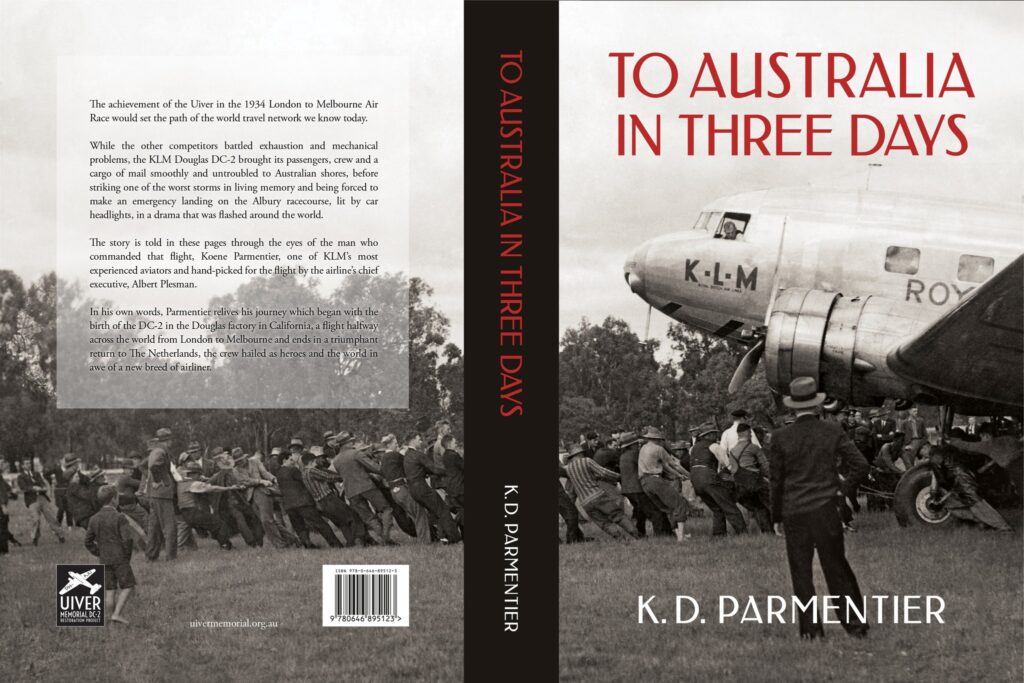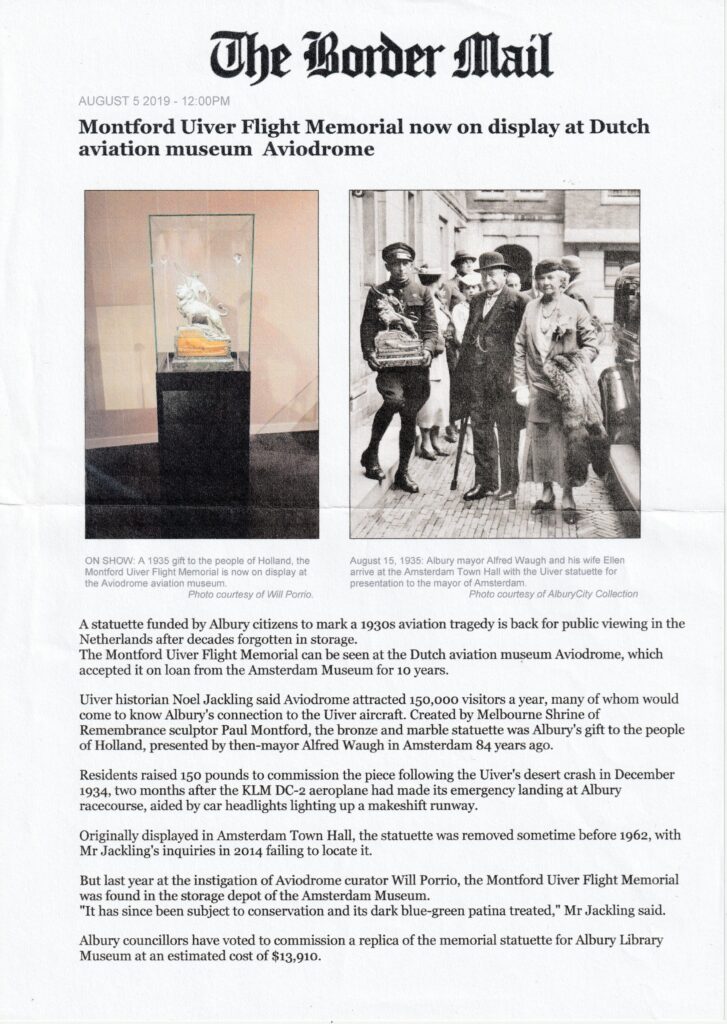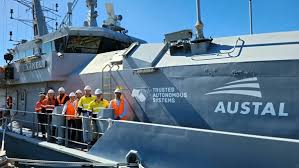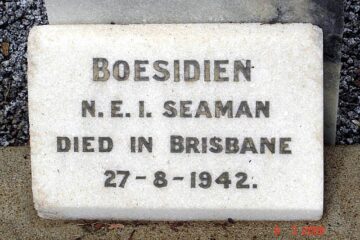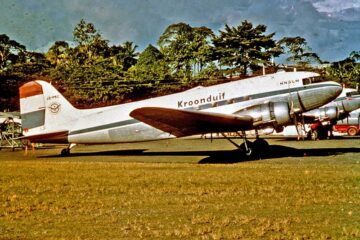The MacRobertson Trophy Air Race (also known as the London to Melbourne Air Race) took place in October 1934 as part of the Melbourne Centenary celebrations. The race was devised by the Lord Mayor of Melbourne, Sir Harold Gengoult Smith, and the prize money of £15,000 was provided by Sir Macpherson Robertson, a wealthy Australian confectionery manufacturer, on the conditions that the race be named after his MacRobertson confectionery company, and that it was organised to be as safe as possible. A further condition was that a gold medal be awarded to each pilot who completed the course within 16 days.
Significantly, both second and third places were taken by airliners, the KLM Douglas DC-2 PH-AJU Uiver (“Stork”) and Roscoe Turner’s Boeing 247-D. Both completed the course in less than a day more than the winner, DH.88 Grosvenor House, flown by Flight Lt. C. W. A. Scott and Captain Tom Campbell Black.
KLM’s DC-2 was even flying a regular route with passengers and 256.000 airmail pieces.
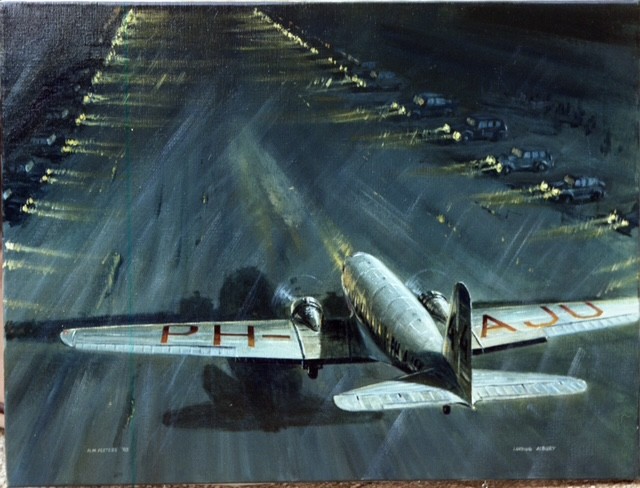
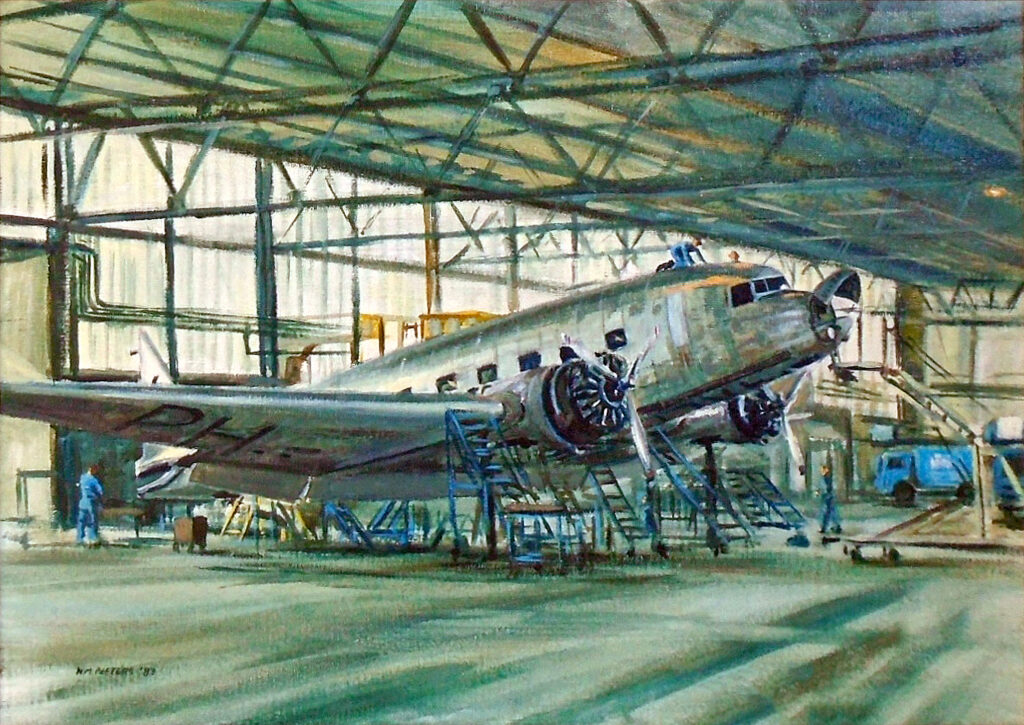
During the race, the Uiver, low on fuel after the crew had become lost when caught in a thunderstorm, ended up over Albury, New South Wales. Lyle Ferris, the chief electrical engineer of the post office, went to the power station and signalled “A-L-B-U-R-Y” to the aircraft in Morse code by turning the town street lights on and off. Arthur Newnham, the announcer on radio station 2CO Corowa appealed for cars to line up on the racecourse to light up a makeshift runway. The Uiver landed successfully, and next morning was pulled out of the mud by locals to fly on to Melbourne and win the handicap section of the race, coming second overall. In gratitude KLM made a large donation to Albury Hospital and Alf Waugh, the Mayor of Albury, was awarded a title in Dutch nobility. Later that year the DC-2, on a flight from The Netherlands to Batavia, crashed (near Ar Rutba, Iraq), killing all seven on board; it is commemorated by a flying replica.
Source Wikipedia
See also: London to Melbourne Race
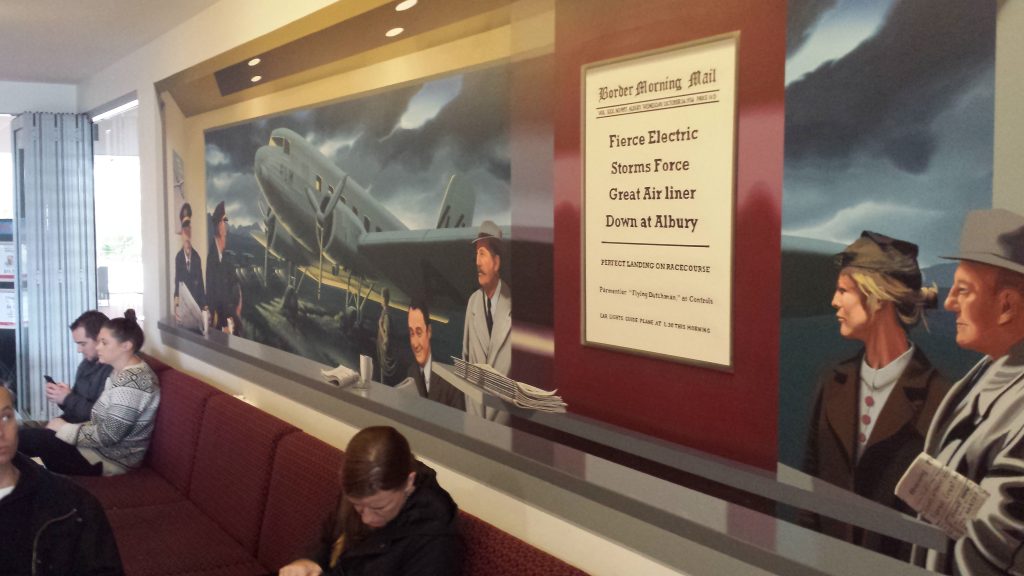
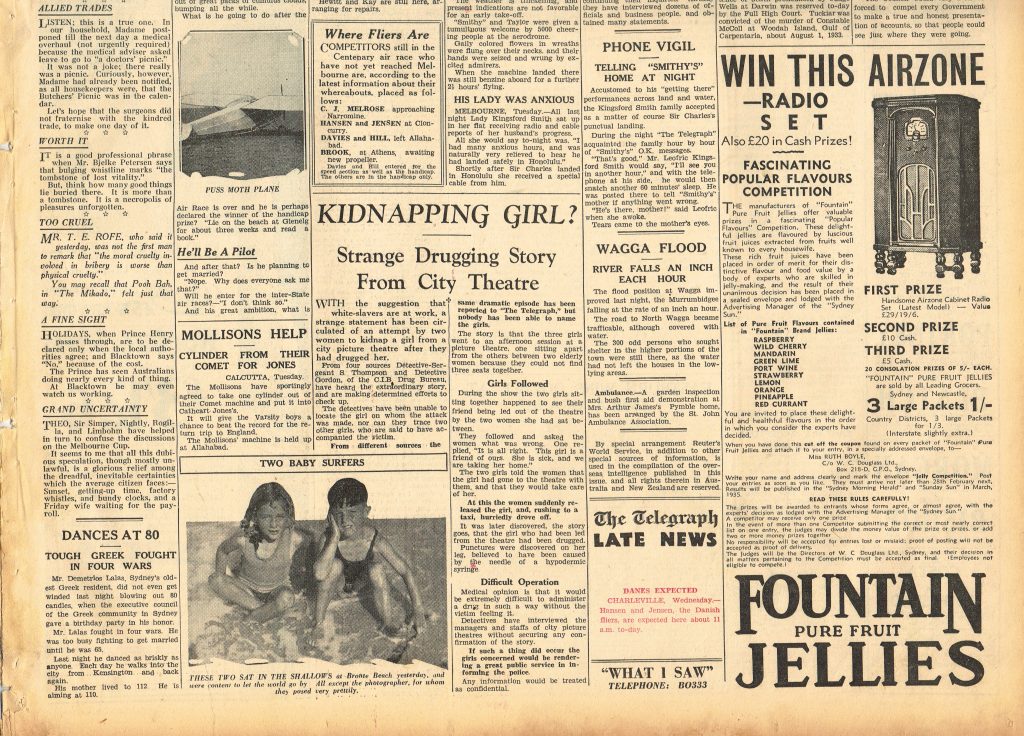

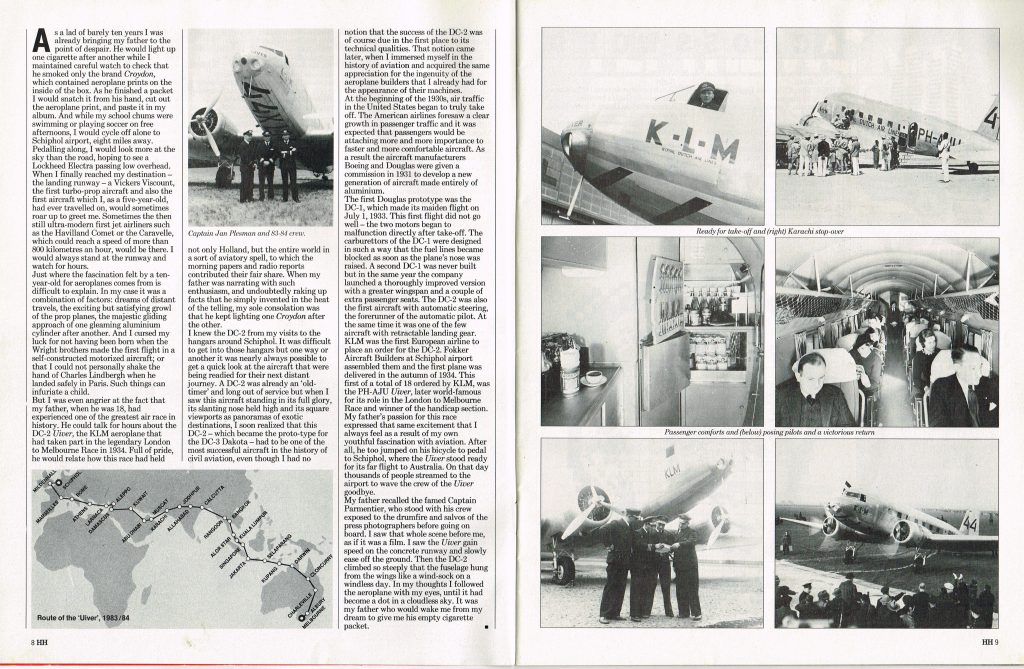
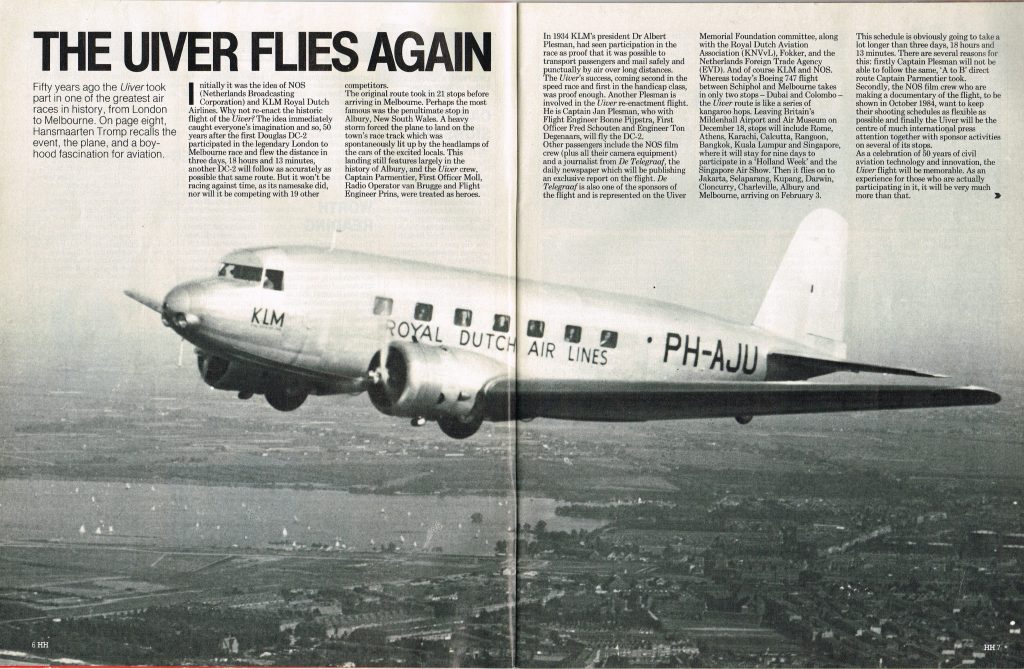
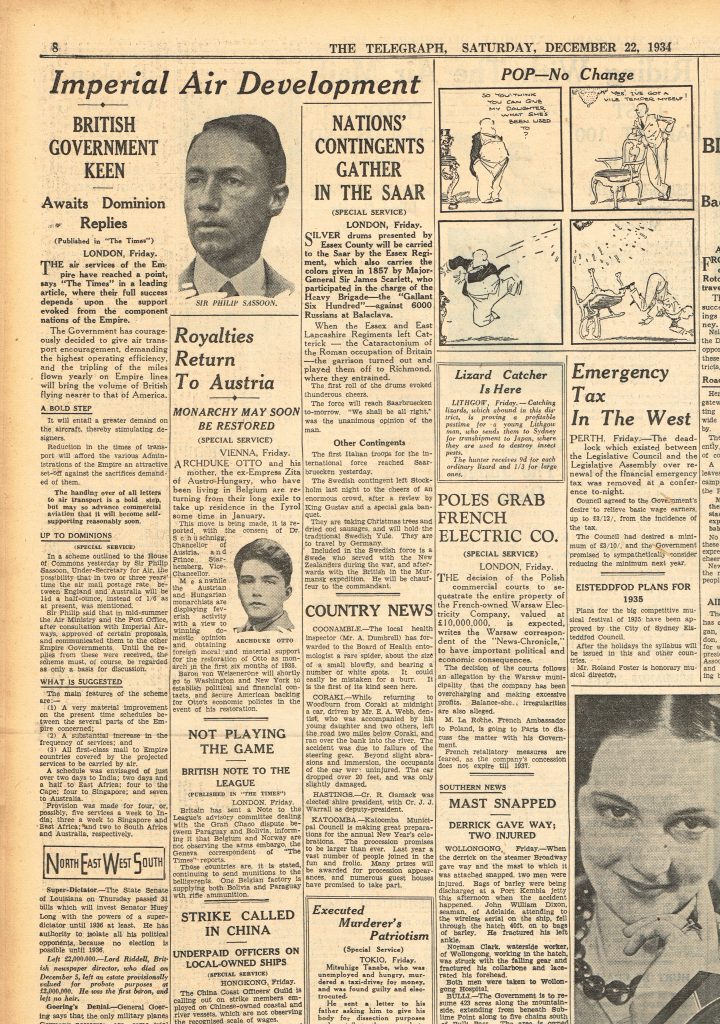
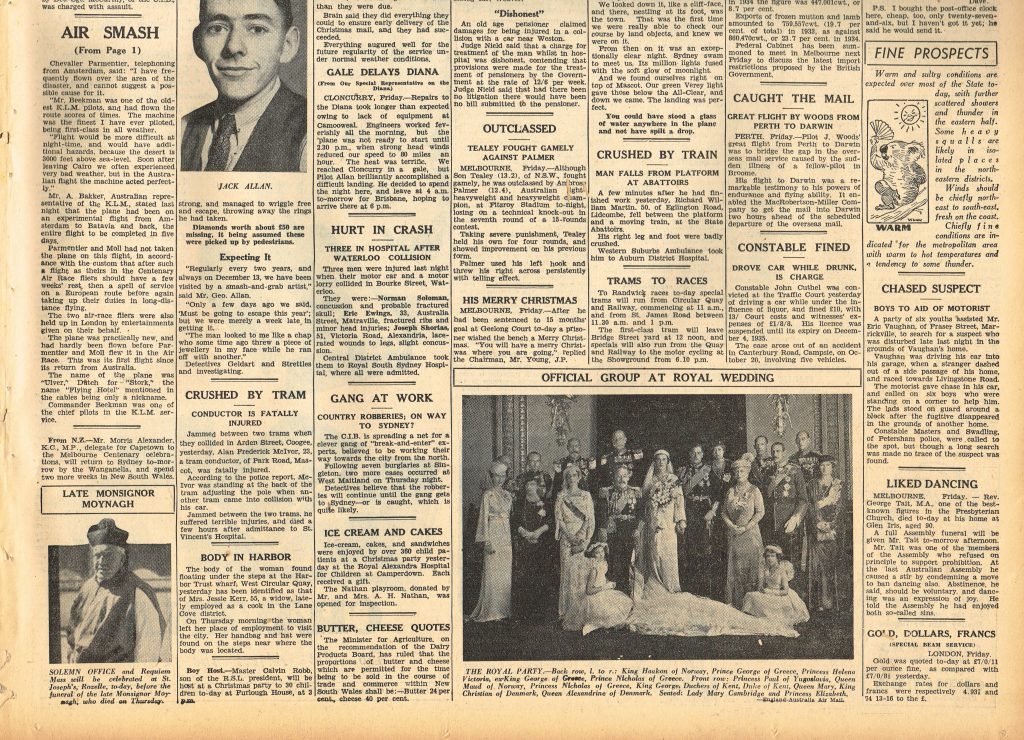
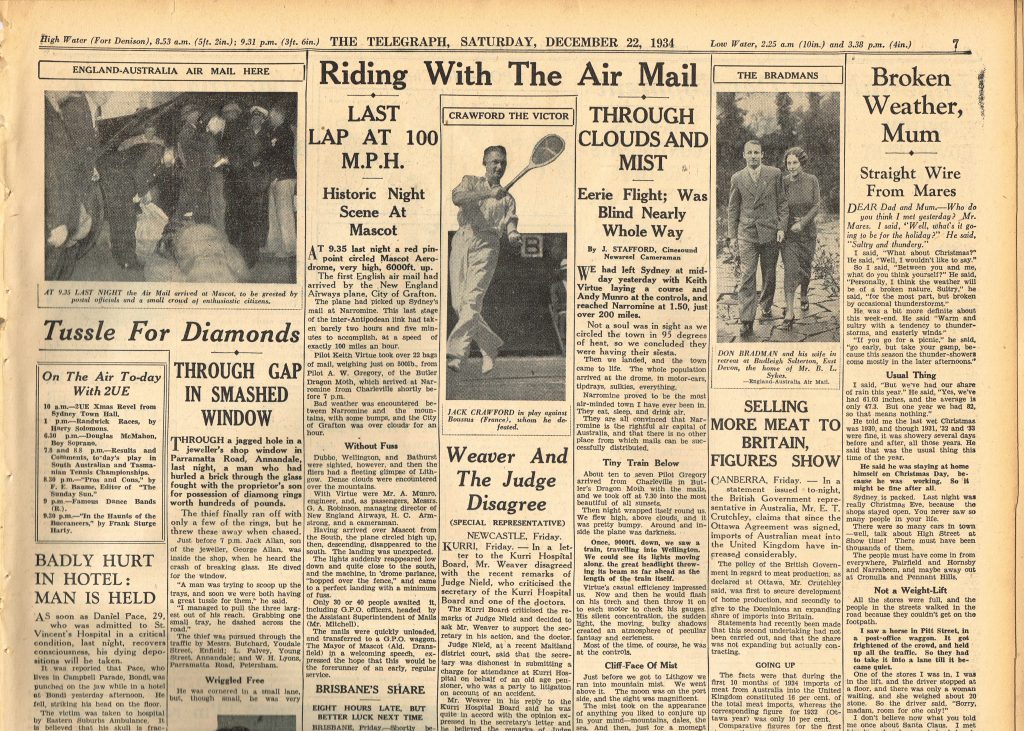
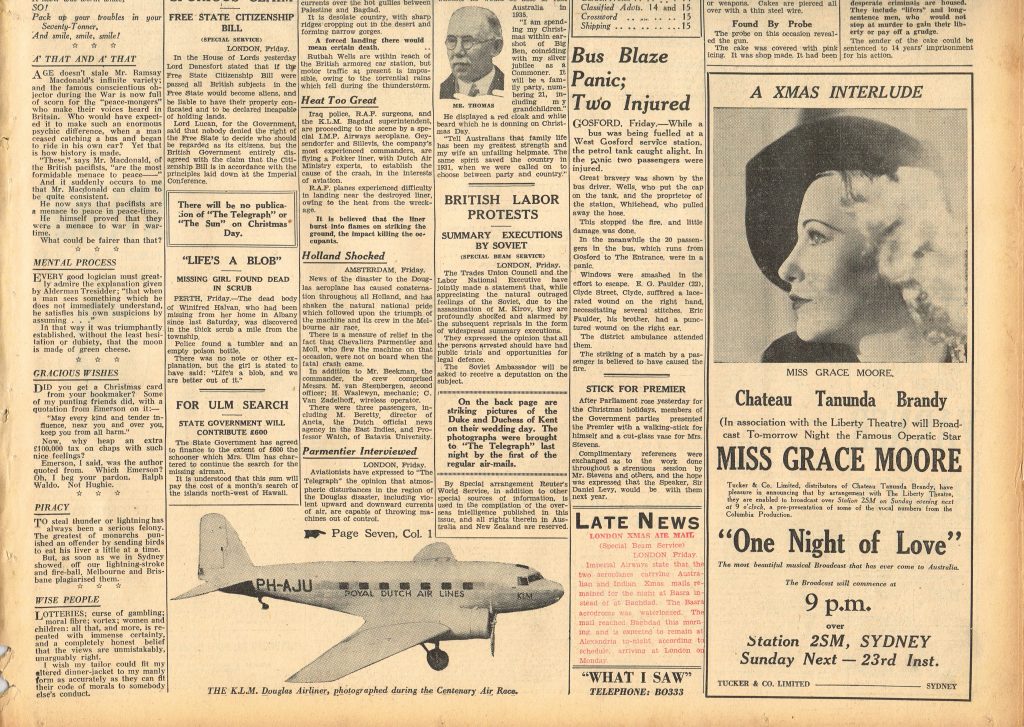
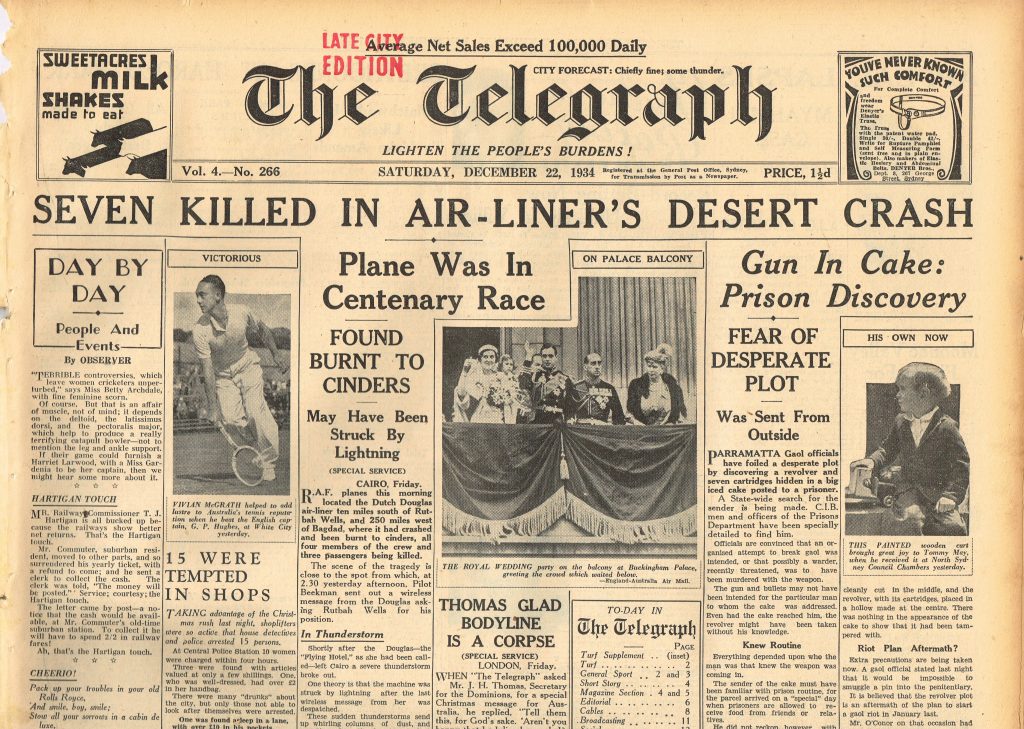

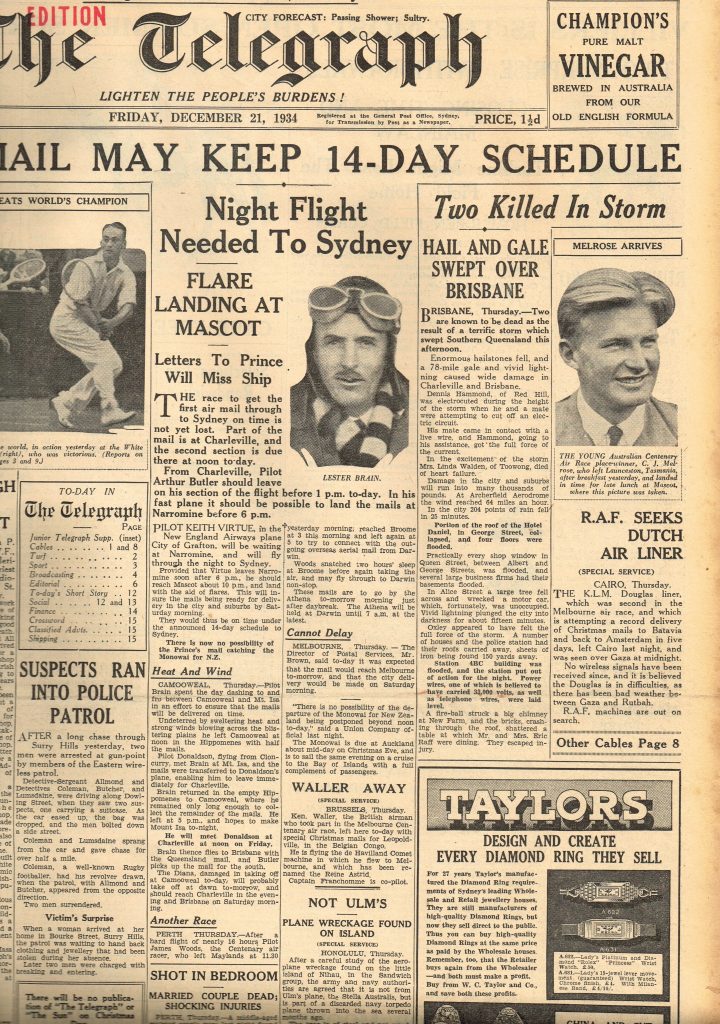
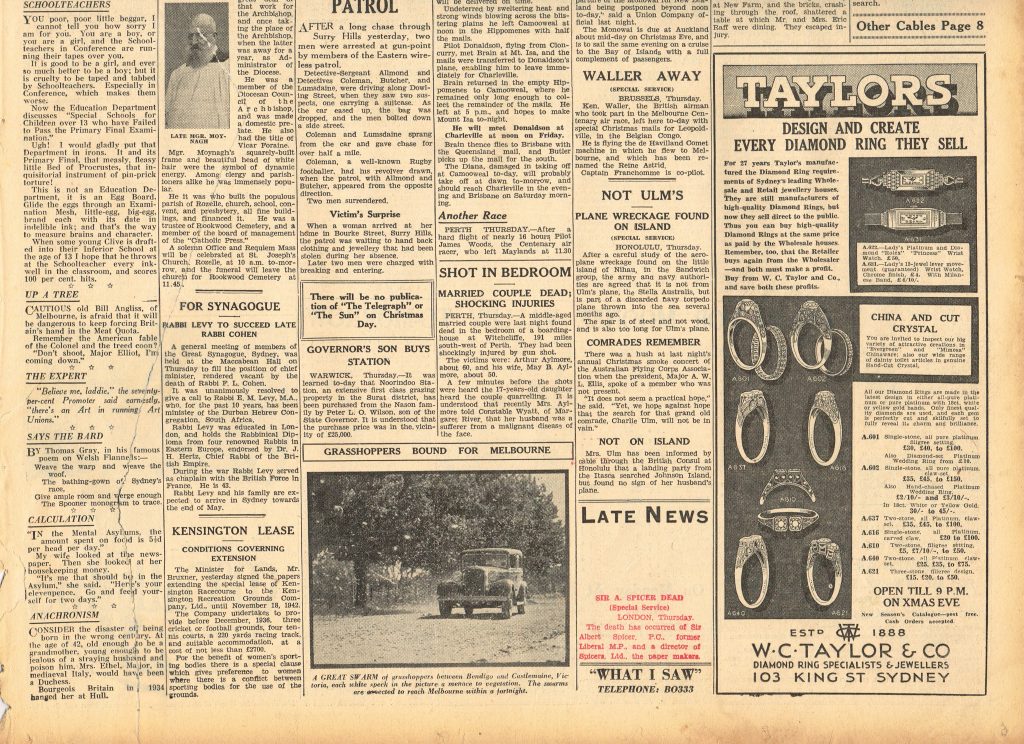
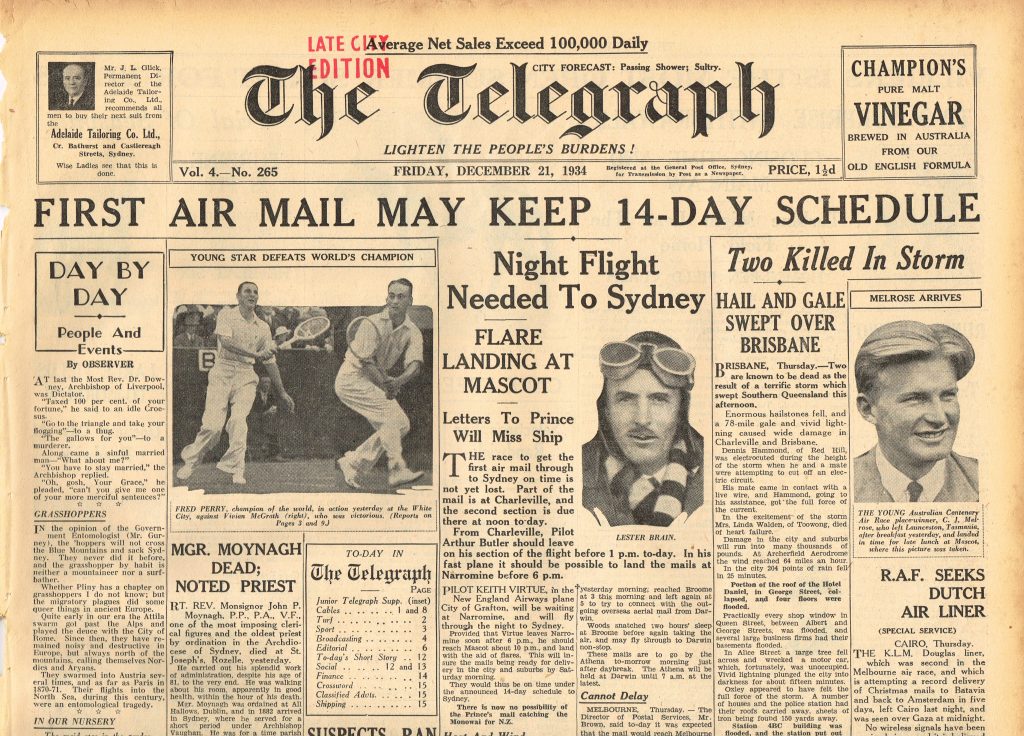
Uiver Puzzle
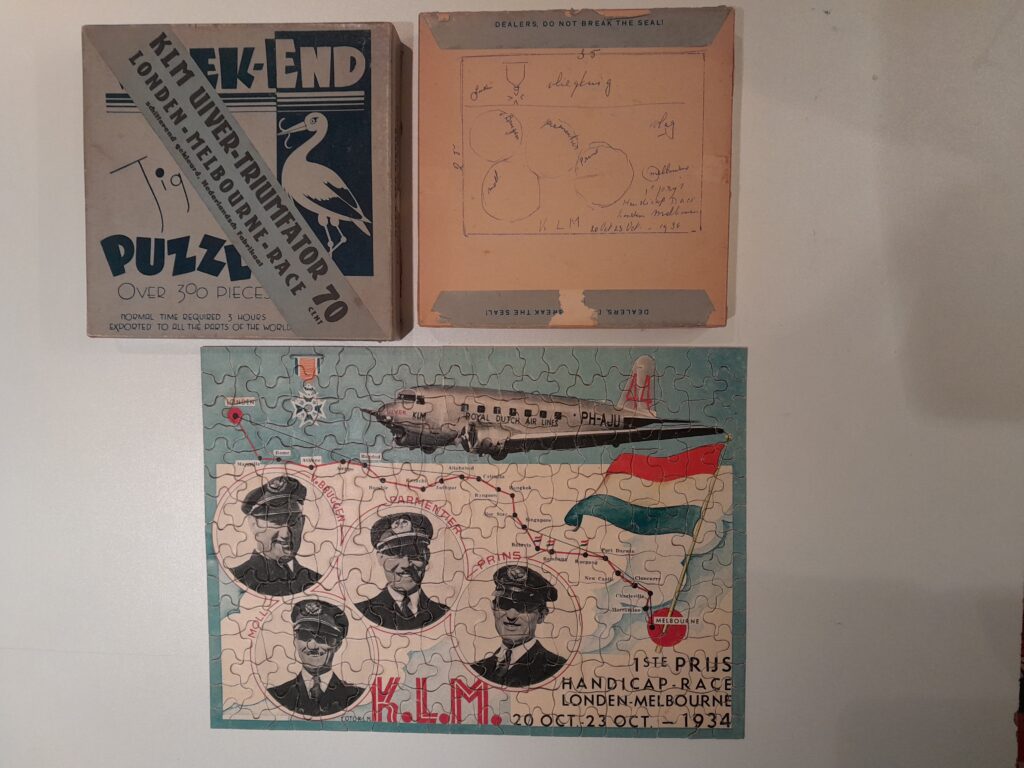
Uiver Researcher: Noel Jackling OAM
After retirement as a lawyer and university lecturer in Instructional Design, Noel Jackling redirected his attention to matters of history. Since 2010, he has focused on the story of the KLM Royal Dutch Airlines ‘Uiver’ and its place in our shared Dutch–Australian heritage. His research led to major additions to the Uiver collection at the Albury Library Museum, and successful advocacy for its listing on the NSW State Heritage Register.
In 2018, the Kingdom of the Netherlands honoured Noel by investing him as a Ridder (Knight) of the Order of Oranje-Nassau. In 2020, Noel was awarded an Order of Australia Medal for his services to community history.
Noel is currently documenting connections between the Albury Post Office and the Uiver, with a view to upgrading Heritage Listings for the Albury Post Office. His dream is for the first floor of the Albury Post Office to be converted into a telecommunications museum, representative of the ABC’s 2CO Studio and the Albury telephone exchange that operated there in the 1930s.
AHSA (NSW) Inc. Zoom presentation by Noel Jackling OAM titled “The Uiver from Construction to Destruction”.This talk tells the full story of the DC-2 Uiver which came second in the 1934 air race from Mildenhall UK to Melbourne, and had an effect on Australian aviation history that was far greater than the winning de Havilland Comet. The story of its adventures at Albury is legend, and Noel tells more of the story of this remarkable aircraft.
90th anniversary – 2024
To Australia In Three Days is a newly translated English edition of In Drie Dagen Naar Australië, a rare 1935 book written by Koene Parmentier, the Captain of the Uiver. This new English edition was launched by the Netherlands Ambassador to Australia, H.E. Mrs Ardi Stoios-Braken, at the launch of the 90th anniversary of the landing of the Uiver in Albury.
